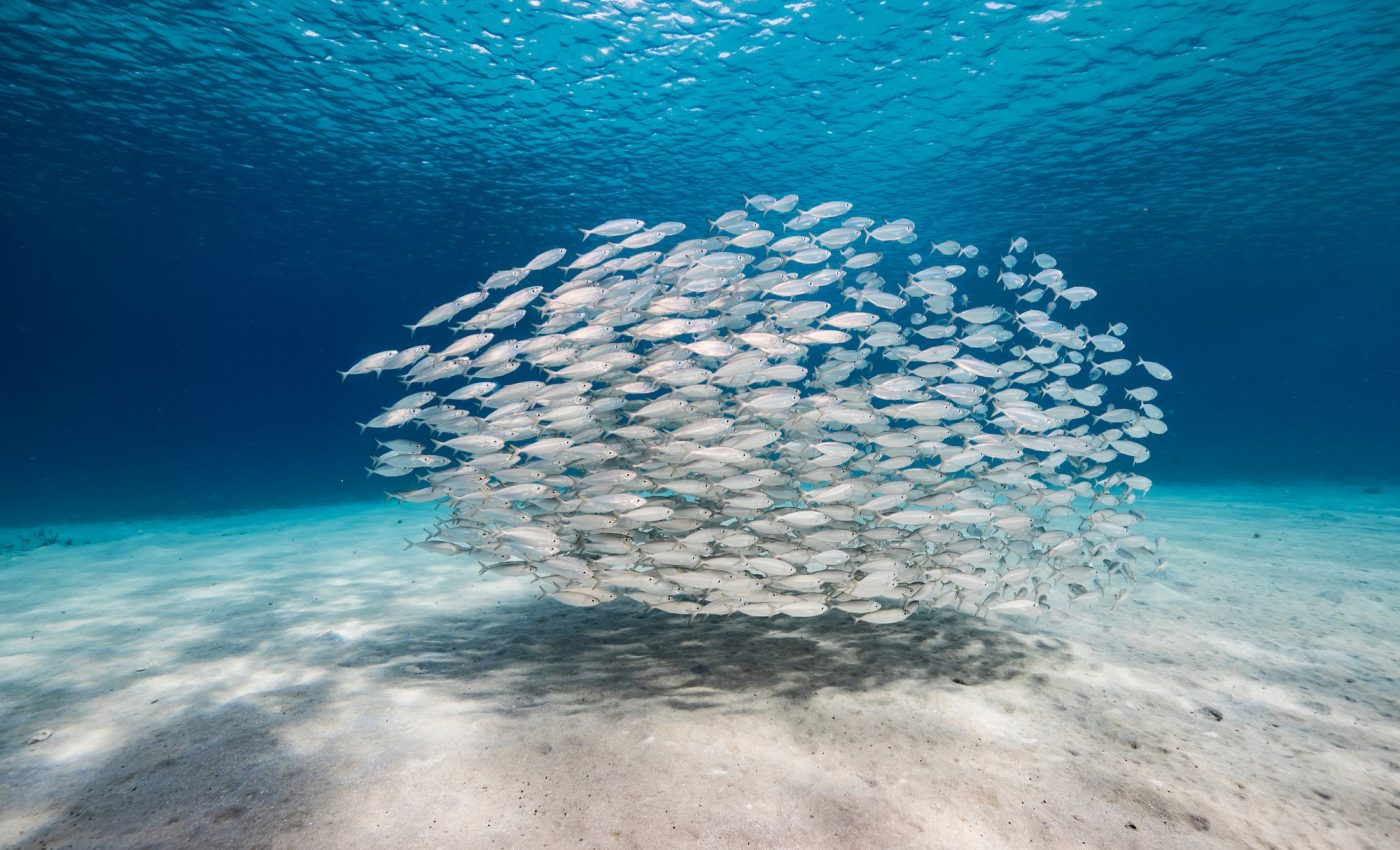
Fish use 79% less energy when they swim in a group
The ocean can be a turbulent place, especially for small fish trying to navigate strong currents. However, new research suggests that fish have developed an ingenious solution to this problem: swimming in schools.
Scientists have long been fascinated by the complex and coordinated movements of fish schools, but the reasons behind this behavior have remained somewhat of a mystery.
A new study reveals that schooling fish expend significantly less energy when swimming in turbulent water compared to their solitary counterparts.
Turbulent sheltering hypothesis
Researchers from Harvard University, led by Yangfan Zhang, proposed the “turbulent sheltering hypothesis.”
This theory suggests that fish swimming in groups effectively shield each other from the full force of disruptive water currents, making it easier to navigate through rough waters. Essentially, fish have figured out that there’s strength in numbers when it comes to battling the elements.
To test this hypothesis, the researchers conducted experiments with giant danios (Devario aeqipinnatus). They observed these fish swimming alone and in groups of eight, both in turbulent and calm water conditions.
Using high-speed cameras and a respirometer (a device that measures respiration rates and energy expenditure), the researchers were able to meticulously analyze the movements and energy consumption of the fish.
Fish teamwork while swimming
The experimental findings provided compelling evidence for the energy-saving benefits of schooling behavior in fish.
Schooling fish, those swimming in cohesive groups, were observed to have a drastically reduced energetic cost compared to fish swimming alone. Specifically, in turbulent water conditions, fish swimming in schools demonstrated a remarkable 79% reduction in energy expenditure compared to solitary individuals.
This reduction in energy expenditure was accompanied by behavioral adaptations in response to turbulence. Schooling fish were observed to swim in tighter formations, minimizing their exposure to disruptive currents.
This clustering behavior allowed them to effectively utilize the hydrodynamic advantages of group swimming, reducing the individual effort required to maintain speed and stability.
Conversely, solitary fish were forced to compensate for the lack of collective sheltering by increasing their tail-beat frequency and amplitude. This increased effort to maintain the same speed as their schooling counterparts highlights the significant energetic burden faced by fish swimming alone in turbulent environments.
Fish ecology and conservation
This research has significant implications for our understanding of fish ecology and behavior. It also has practical applications in conservation efforts.
The findings could inform the design and maintenance of habitats for protected fish species and aid in managing invasive ones.
The insights gained from this research hold significant implications for various fields, including fish ecology,hydrodynamics, and conservation.
By understanding how fish schools utilize collective movement to mitigate the energetic costs of swimming in turbulent environments, experts can gain a deeper understanding of fish behavior and ecological interactions.
Additionally, the study contributes to the field of hydrodynamics by shedding light on the complex interactions between fluid flow and biological organisms.
The observations of fish adjusting their swimming patterns and formations in response to turbulence provide valuable data for refining mathematical models and simulations of fluid dynamics.
Collective movement in fish swimming
The study of collective movement, not just in fish but also in birds and other animals, has always captivated scientists and nature enthusiasts. This research adds another layer to our understanding of how animals have evolved to overcome environmental challenges through cooperation.
“What is the function of schooling behavior in fishes? We show that being in a school substantially reduces the energetic cost for fish swimming in a turbulent environment, compared to swimming alone, providing support for the hypothesis that schooling behavior protects individual fish from the increased energetic cost associated with swimming in turbulence,” noted the study authors.
Implications for other animals
The research also raises intriguing questions about the energy dynamics of group movement in other aquatic and aerial animals. Could similar principles of energy conservation apply to flocks of birds flying in formation or pods of dolphins swimming together?
Future studies will likely delve deeper into these questions and explore the broader implications of collective movement across various species.
In sum, fish schools have revealed yet another secret: the power of teamwork to overcome the challenges of a turbulent environment.
This research not only enhances our understanding of fish behavior but also opens new avenues for conservation efforts and inspires further exploration into the fascinating world of collective movement in the animal kingdom.
The study is published in the journal PLoS Biology.
—–
Like what you read? Subscribe to our newsletter for engaging articles, exclusive content, and the latest updates.
Check us out on EarthSnap, a free app brought to you by Eric Ralls and Earth.com.
—–













